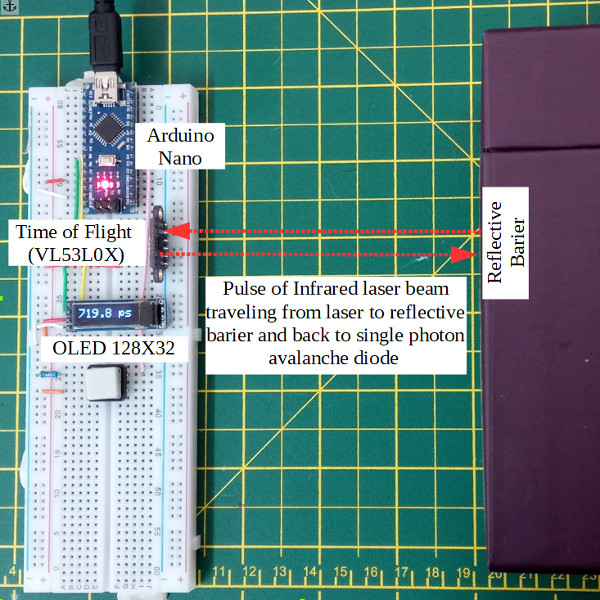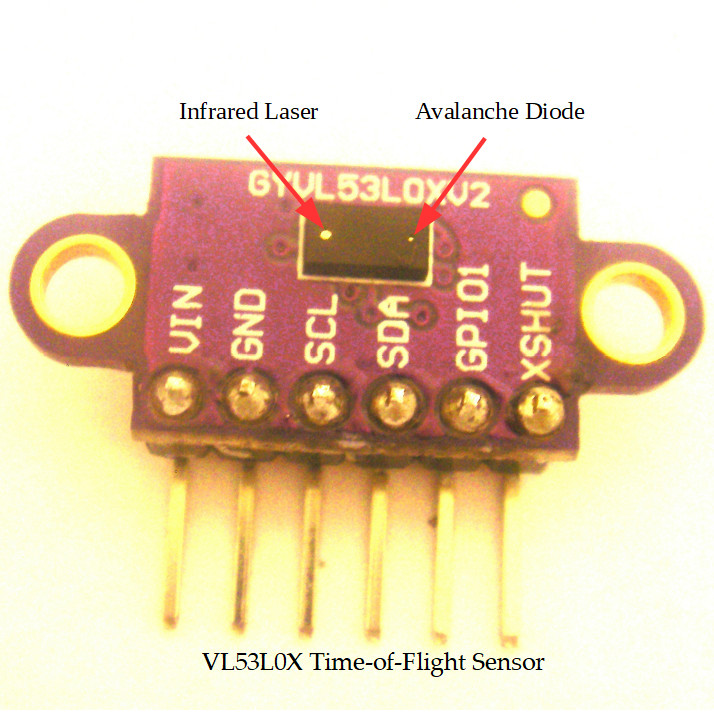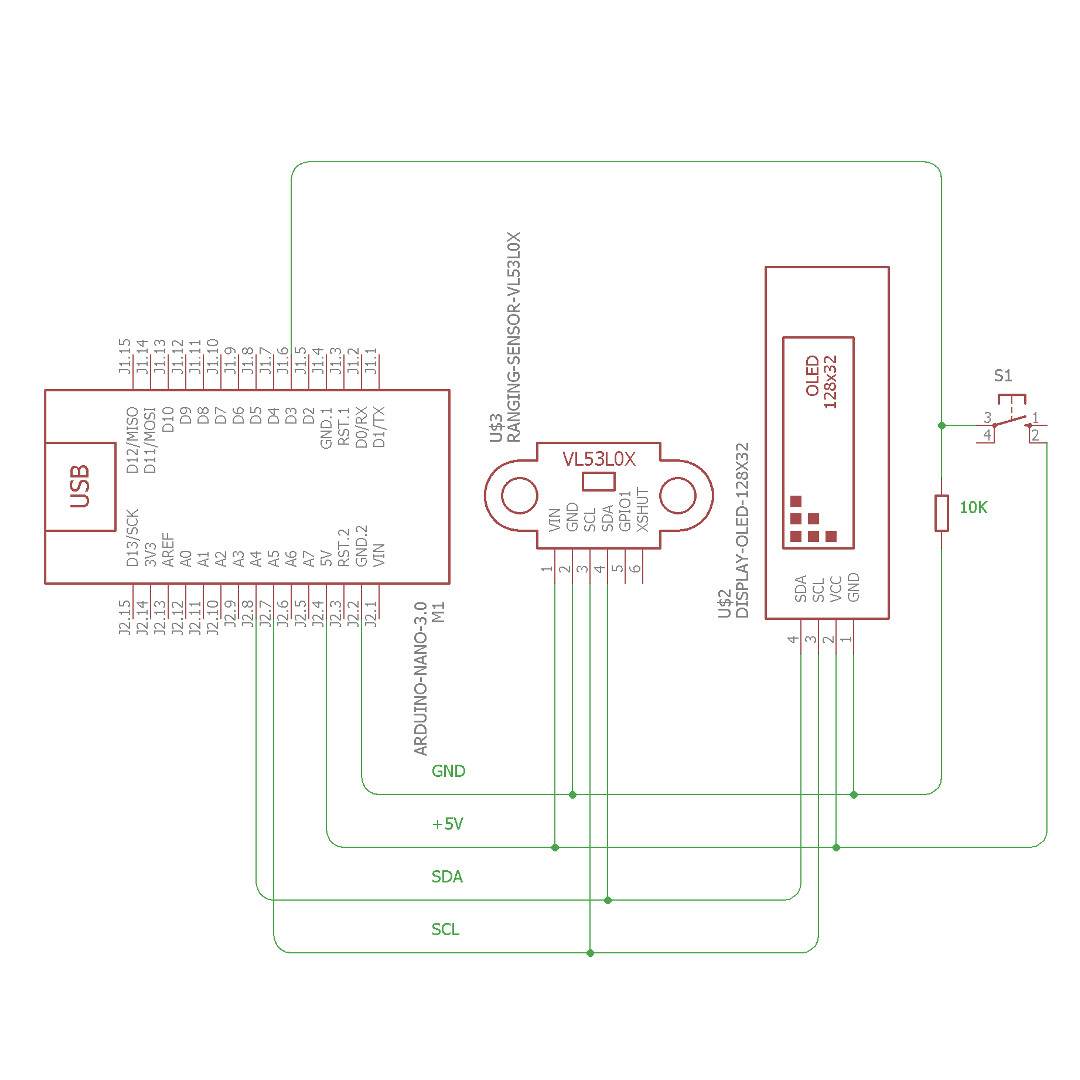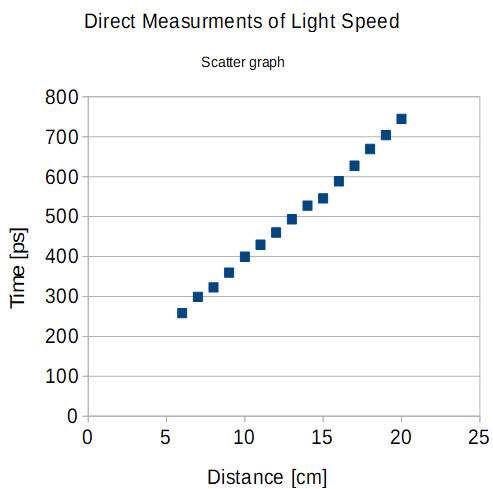The speed of light in a vacuum is 299 792 458m/s. In the past, direct measurements of the time-of-flight of light were
relatively difficult. The recent development in laser-ranging modules which contain an infrared laser, a photodetector, and a
time-of-flight timer has made measurements of the speed of light possible for amateur scientists.
|
 |
 |
The VL53L0X sensor is a new generation time-of-flight laser-ranging module. It uses the 940nm VCSEL (Vertical Cavity Surface Emitting Laser), which is an infrared, invisible to the human eye, Class 1 laser. The detector contains a SPAD (Single Photon Avalanche Diode) array and ST's second-generation FlightSenseTM patented technology. Despite the advanced technology, the VL53L0X development module is easily available for below $6 (on eBay). |
Our system contains an Arduino Nano, the VL53L0X module, an 128x32 I2C OLED display with SSD1306 driver, and a single button. The Arduino Nano communicates with the VL53L0X module and the OLED display using an I2C bus. The following libraries are used: Wire.h, Adafruit_SSD1306.h and VL53L0X.h. The Arduino program can be downloaded here. The electronic scheme to the right was created in Autodesk Eagle ver 8.5.1 with DIY Modules Library for EAGLE |
 |
 |
The results of the time-of-flight measurements can be downloaded
here
and are presented as the scatter graph to the left. The results were analysed using the linear regression model,
with the results that the speed of light is equal to 293 000 000 m/s. |